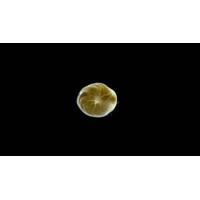
Ocean Acidification: Warming’s “Evil Twin”
Meteorological Organization’s latest State of the Global Climate report released in March confirmed that acidification of the ocean surface is continuing, demonstrated by the steady decrease of global average ocean surface pH. The most intense regional decreases are in the Indian Ocean, the Southern Ocean, the eastern equatorial Pacific Ocean, the northern tropical Pacific and some regions in the Atlantic Ocean.Projections show that ocean acidification will continue to increase in the 21st century at rates dependent on future emissions, and the report points out that changes in deep-ocean pH are
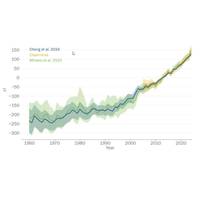
WMO Documents Spiraling Climate Impacts
will continue for at least the rest of the 21st century, even for low carbon emission scenarios.Ocean AcidificationAcidification of the ocean surface is continuing, as shown by the steady decrease of global average ocean surface pH. The most intense regional decreases are in the Indian Ocean, the Southern Ocean, the eastern equatorial Pacific Ocean, the northern tropical Pacific, and some regions in the Atlantic Ocean.The effects of ocean acidification on habitat area, biodiversity and ecosystems have already been clearly observed, and food production from shellfish aquaculture and fisheries has been
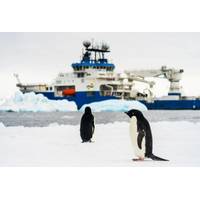
Schmidt Ocean Institute Successfully Concludes Inaugural Antarctic Expedition
vessel Falkor (too) has completed its first science expedition to Antarctica. The three-week expedition, which ended in early January, was ambitious in its science scope and required operational refinements to navigate safely in unfamiliar environmental conditions.“Operating our ship in the Southern Ocean marks a significant milestone in Schmidt Ocean Institute’s history,” said Eric King, senior director of maritime infrastructure. “R/V Falkor (too) performed exceptionally well, our crew gained a tremendous knowledge and experience, and the expedition prepared us well

Dancing Krill
Chase, probe, embrace, flex, push. It’s probably too much information, but that is how krill mate.The behavior was recorded on a deepsea camera 500 meters below the surface of the Southern Ocean back in 2011 by Australian Antarctic Division researchers – who then made an animated illustration of this special “dance.”Krill can change from adults to juveniles, and they can survive over 200 days of starvation, reducing their size by using their own body proteins rather than molting their exoskeleton.They are known for being an important food source for whales, seals and penguins
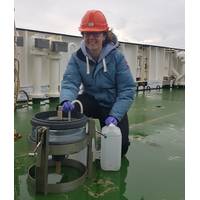
UK NOC's Study Challenges Role of Plankton in Ocean Carbon Storage Process
A new UK National Oceanography Centre (NOC)-led study has put a major question mark over the role a unique group of tiny microscopic plants plays in driving ocean carbon storage.Diatoms, a type of plankton or marine algae, have a significant role in drawing carbon down into the deep, especially in the Southern Ocean, which takes up about a third of organic carbon stored in the ocean.Uniquely, diatoms have dense, silica-based exoskeletons – like miniature glass houses – which were thought to provide ballast, making them prone to sinking and, therefore, a key way carbon is transported to the deep
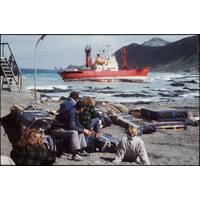
For Those with Saltwater in Their Veins
for 26 years.The “little red ship” was specifically designed to boost the research capabilities of the Australian National Antarctic Research Expedition (ANARE).In 1979 she was modified for participation in the internationally coordinated program to study marine living resources in the Southern Ocean: BIOMASS (Biological Investigations of Marine Antarctic Systems and Stocks). This was the first major Australian Antarctic project investigating deep sea marine science, and Nella Dan was modified to support deep sea research trawling with instrument rooms, echo sounders, a computer data logging
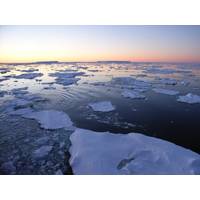
As Antarctic Sea Ice Disappears, Storms Worsen - study
winter sea ice cover in 2023 and provides the first clear picture of the impacts of the disappearing sea ice.Using data from the atmospheric layer just above the ocean surface, it found a doubling of heat loss to the atmosphere, matched by higher numbers of storms around much of the high latitude Southern Ocean.The study also warns of potentially far-reaching impacts on the deeper ocean circulation, due to the heat loss making Antarctic surface waters denser than previously seen.Lead author Professor Simon Josey said the results point to an urgent need to use state-of-the-art ocean and climate simulations
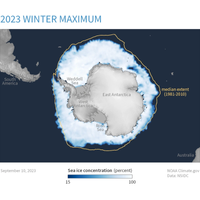
Wind Patterns Help Predict Low Antarctic Sea Ice
Amid all the changes in Earth’s climate, sea ice in the stormy Southern Ocean surrounding Antarctica was, for a long time, an odd exception. The maximum winter sea ice cover remained steady or even increased slightly from the late 1970s through 2015, despite rising global temperatures.That began to change in 2016. Several years of decline led to an all-time record low in 2023, more than five standard deviations below the average from the satellite record. The area of sea ice was 2.2 million square kilometers below the average from the satellite record, a loss almost 12 times the size of Washington

HX Launches Education Program for Antarctic Passengers
on completion of the course.The University and HX will launch the program to both guests and staff starting in the late 2024 season. The course offers roughly four hours of content. Topics include:• The human history of Antarctica• Who owns Antarctica? The Antarctic Treaty System• The Southern Ocean• Ice core studies• Wildlife and ecological communities• Climate change• Citizen science• Living, working and travelling responsibly in Antarctica.HX has hosted over 30 scientists and UTAS-related university students on polar expeditions over the last three years to work


 February 2025
February 2025





